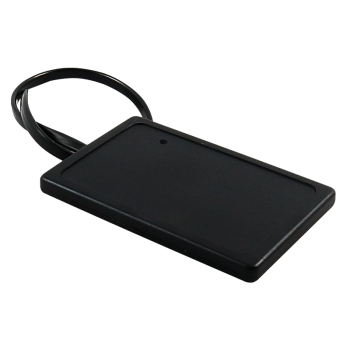RFID
Manufacturer of RFID readers and modules
Netronix is a long-term manufacturer of RFID devices offering the ability to write and read transponders with MIFARE®, Unique, Q5, HITAG, HID, ICODE and others.
Active filters
-
Supply voltage:
3,3V ±10%
-
Supply voltage:
4,5V - 5,5V
-
Supply voltage:
5 - 16V
-
Supply voltage:
5V
-
Supply voltage:
5V (USB)
-
Supply voltage:
5V ±10%
-
Supply voltage:
7 - 15V
-
Supply voltage:
7 - 16V
-
Supply voltage:
7 - 16V
-
Supply voltage:
7 - 25V
-
Supply voltage:
7 - 32V
-
Supply voltage:
8 - 16V
-
Supply voltage:
8 - 18V
-
Supply voltage:
9 - 15V
-
Supply voltage:
PoE IEEE 802.3af
-
Supply voltage:
two AAA batteries
-
Supply voltage:
two AAA batteries
Operating frequency
Supported standards
Interface
Supply voltage
Antenna
LED
Buzzer
Relay
Cable length
Connector
Protocol
Sensor
Working "On metal"
RTC
Read range


UW-UDNK / UW-UDNKB is wall mount RFID proximity card and transponders reader from the Unique (EM4102) family operating at 125kHz low frequency, equipped with an 1-Wire interface. Reader has twelve capacitive touch buttons, built-in antenna, buzzer and progammable RGB LED indicatior.

UW-R4GB is wall mount RFID proximity card and transponders reader from the MIFARE® Classic, Plus, Ultralight C, DESFire, iCLASS (CSN only), ICODE® SLI (ISO 15693) families, operating at 125kHz frequency, equipped with an RS485 and WIEGAND interfaces. Reader has also built-in antenna, buzzer, relay, two LED indicatiors and RTC clock with battery backup and comunicate over interface via OSDP (the latest standard with data transmission encryption, described in more detail in the article), Modbus RTU or Netronix transmission protocols.
- OSDP
- Modbus RTU
- RTC

UW-RES is wall mount RFID proximity card and transponders reader from the MIFARE® Classic, Ultralight, DESFire (ID only), iCLASS (CSN only), ICODE® SLI operating at 13,56MHz, equipped with an Ethernet PoE interface with Netronix over TCP/IP transmission protocol. Reader has also built-in antenna, buzzer, relay and two LED indicatiors.
- PoE IEEE 802.3af


PLA-UDK is contactless RFID cards and transponders reader from Unique family, operating on frequency of 125kHz. Reader has 1-Wire® (Dallas DS1990 emulation) interface with a 1m long cable terminated with a male 2x3 pin type Molex MicroFit3.0 plug. Reader has a built-in antenna and an LED indicator.
Are you looking for custom RFID products?
In addition to the offer of universal modules and RFID readers, which are permanently available in the offer
Netronix provides services of designing RFID devices for individual orders.
Thanks to this, it is possible to closely match the designed RFID device to the specificity of the target application.











